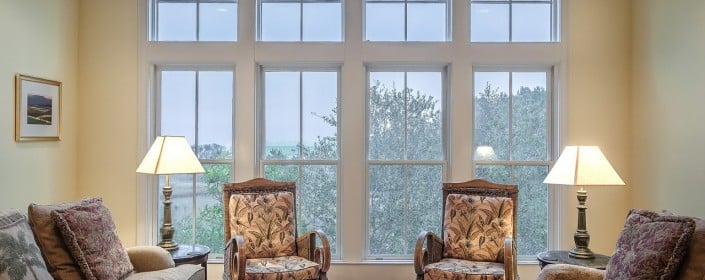Whether it be windows, doors, or building materials, contractors and builders take great pride in the high standards they adhere to in the building of energy efficient homes. With the increasingly prohibitive cost of heating our homes in a northern climate, as well as the progressively expensive electricity rates homeowners are facing, it’s probably fair to say that energy efficient homes—especially their doors and windows—are now the expectation and the norm. In fact, the choice and investment in the windows or doors for a home significantly impacts how energy efficient it is now, as well as will remain, for years to come. Older homes also needn’t be left in the cold—both literally and figuratively; replacing original doors and windows with wisely chosen new ones can dramatically impact the energy efficiency of, and bring new life to, many an aging home. If a newly built home is on your horizon, or it’s simply time to upgrade to modern windows and doors, the following outlines some basic considerations to keep top-of-mind as you move forward with your plans.
The construction of a new home is the best opportunity to strategically plan the number of doors, windows, their placement, as well as their design as part of the home’s overall design scheme in the quest for energy efficiency. It’s a real advantage to be able to strategize right from the beginning the optimal way to maximize natural light and solar heat gain in colder climates (and conversely to plan for proper shading in order to maintain cooler temperatures in the warmer seasons). In our climate, in particular, experts know that the net gain made during the day via solar heat through well-positioned, south-facing windows and doors, more than makes up for any heat lost at night—in fact, heating costs can be reduced by up to 25 per cent.
Window and door styles obviously vary according to their utility in a home, or even just personal preference, but it is important to note that style impacts the extent to which they are air-tight. Technology and the manufacture of doors and windows has come a long way and frame materials are more durable and more insulated than ever, never mind the glass itself, with its double and triple pane options. The decision for casement, sliding, single or double hung windows for your home, however, should be made with not only design preference, but consideration of placement in the home, and the extent to which they’ll be opened and closed—some styles are said to offer a better air seal than others. It goes without saying that doors, especially, are going to be used regularly. Ensure your preferred door style comes with a good seal, and even consider adding a storm door to further protect from the elements.
Energy performance will continue to rank very high in window and door choices; they are not only a smart financial investment, but an environmental one, too, as they do their part to reduce energy consumption.


